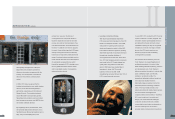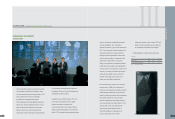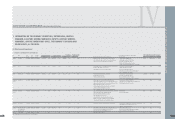HTC 2007 Annual Report Download - page 18
Download and view the complete annual report
Please find page 18 of the 2007 HTC annual report below. You can navigate through the pages in the report by either clicking on the pages listed below, or by using the keyword search tool below to find specific information within the annual report.
III
OVERVIEW
31
O VERVIEW
30
INDUSTRY OVERVIEW
The wireless communications industry has
experienced tremendous growth in recent years. In
2007, global mobile phone usage passed the three
billion mark — equivalent to half the world's
population — for the first time. In line with this strong
market growth, product developers, wireless network
providers, and mobile phone manufacturers have
formed closer cooperative relationships to address
the rising demands and expectations that
consumers have of their mobile communication
devices. In fact, the growing number of competitors
now investing in the converged device market will
surely help to expand mobile communications
technologies to the world's billions of users.
The maturation of the global 3G wireless
communications industry in recent years has
prompted major telecommunications service
providers to roll out increasingly comprehensive data
service offerings. Increasingly wide arrays of 3G
services are now available to consumers.
Furthermore, mobile network data transfer speeds
continue to increase and related data services are
growing. These developments, in turn, are
stimulating the expansion of multimedia services,
Internet, e-mail, and other applications. Driven by
increasingly sophisticated wireless communications
products that incorporate appeal as well as
innovation, the potential for continued strong growth
is exceptional.
Symbian and Microsoft Windows Mobile are likely to
remain the dominant operational platforms for the
foreseeable future. Global market analysis reports
and analyses published by investment banks predict
up to 26% compound average growth in market
demand for converged devices in the five-year
period between 2007 and 2011. The eye-popping
46% compound average growth rate anticipated for
such devices designed around the Windows Mobile
platform has, naturally, stirred the greatest attention
and excitement. Looking ahead, Symbian and
Windows Mobile are expected to continue to
dominate the global converged device market
through 2010, with their respective market shares at
the close of the decade anticipated at 50% and 19%,
respectively. Behind the market leaders, the
proprietary platforms of BlackBerry and Mac can
expect to hold down 15% and 6% shares of global
























